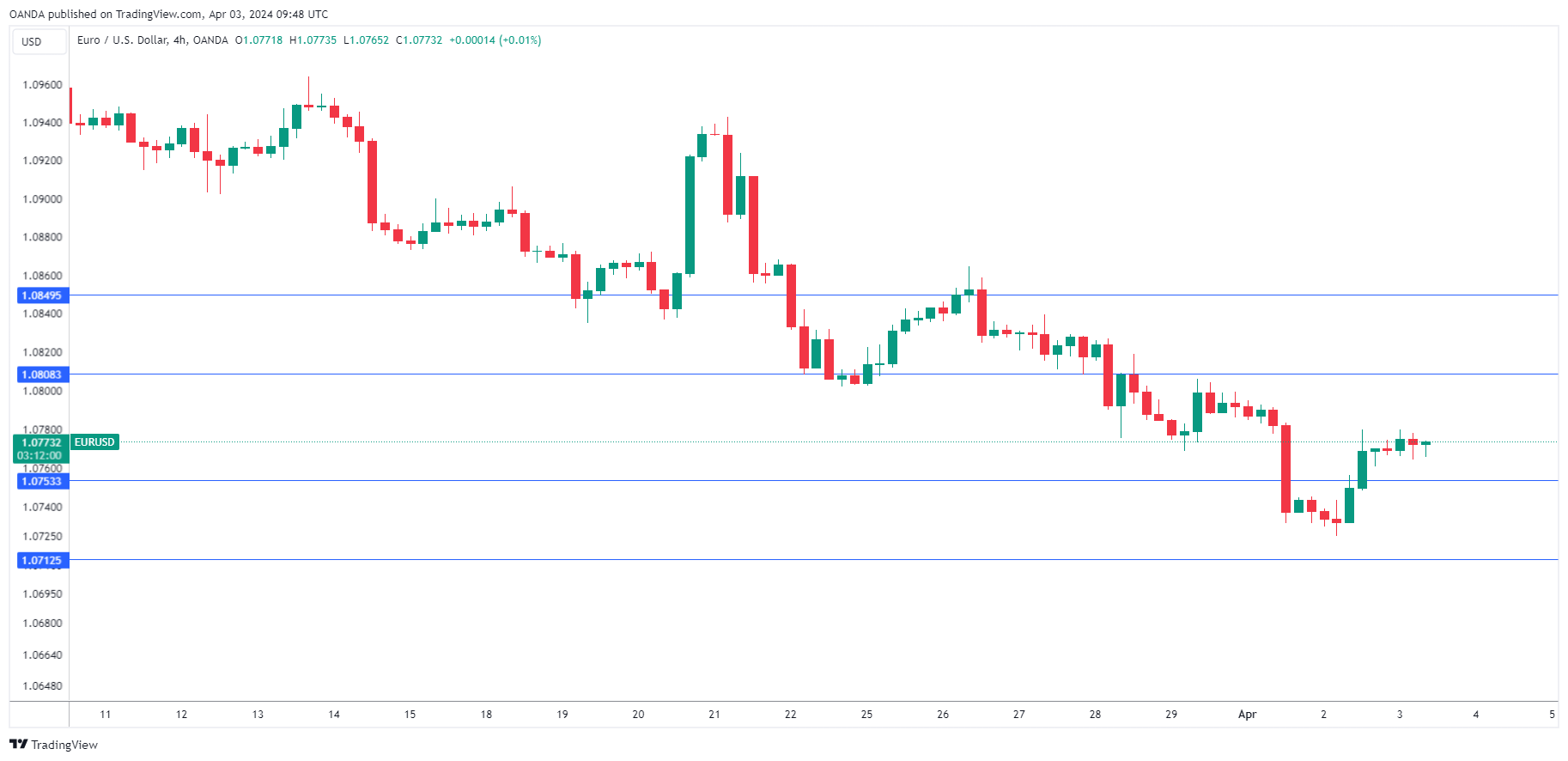The euro is showing little movement on Wednesday. In the European session, EUR/USD is trading at 1.0777, up 0.05%.
Eurozone Inflation Ticks Lower
Inflation in the eurozone continues to decline. March CPI eased to 2.4% y/y, down from 2.6% in February and below of the market estimate of 2.6%. This matched November’s 28-month low and was driven by the continued slowdown in food inflation. Monthly, CPI rose to 0.8%, up from 0.6% but below the forecast of 0.9%.
Core CPI also declined, with a reading of 2.9% y/y. This was below the February gain of 3.1% and just shy of the market estimate of 3.0%. Core CPI, which is considered more significant than the headline release, has declined for an eighth straight month and dropped to its lowest level since February 2022. Germany’s inflation report, which was released yesterday, also indicated that inflation dropped in March, with headline CPI easing to 2.2% and core CPI to 3.3%.
The drop in inflation is encouraging news for the ECB, which meets next week. The central bank must balance weak economic activity, which would support another pause, against falling inflation, which would support calls to lower rates.
The ECB is likely to maintain rates next week but there is a strong probability that it will press the rate-cut trigger at the June meeting. The ECB may want to prepare the markets for a shift in monetary policy and we could see some dovish signals at next week’s meeting, which might weigh on the euro.
In the US, today’s ADP employment report kicks off a host of employment releases, highlighted by nonfarm payrolls on Friday. The ADP report isn’t considered a reliable precursor to NFP, but investors are interested in any labour reports they can analyse ahead of the NFP release. ADP came in at 140,000 in February and is expected to rise slightly to 148,000 in March.
EUR/USD Technical
- EUR/USD is putting pressure on support at 1.0753. Below, there is support at 1.0712
- 1.0808 and 1.0849 are the next resistance lines